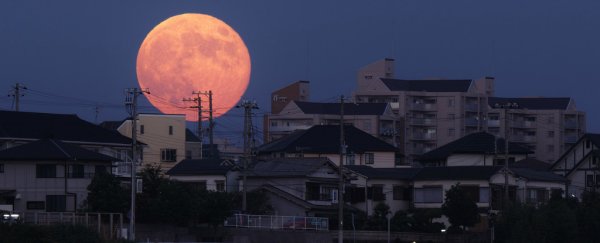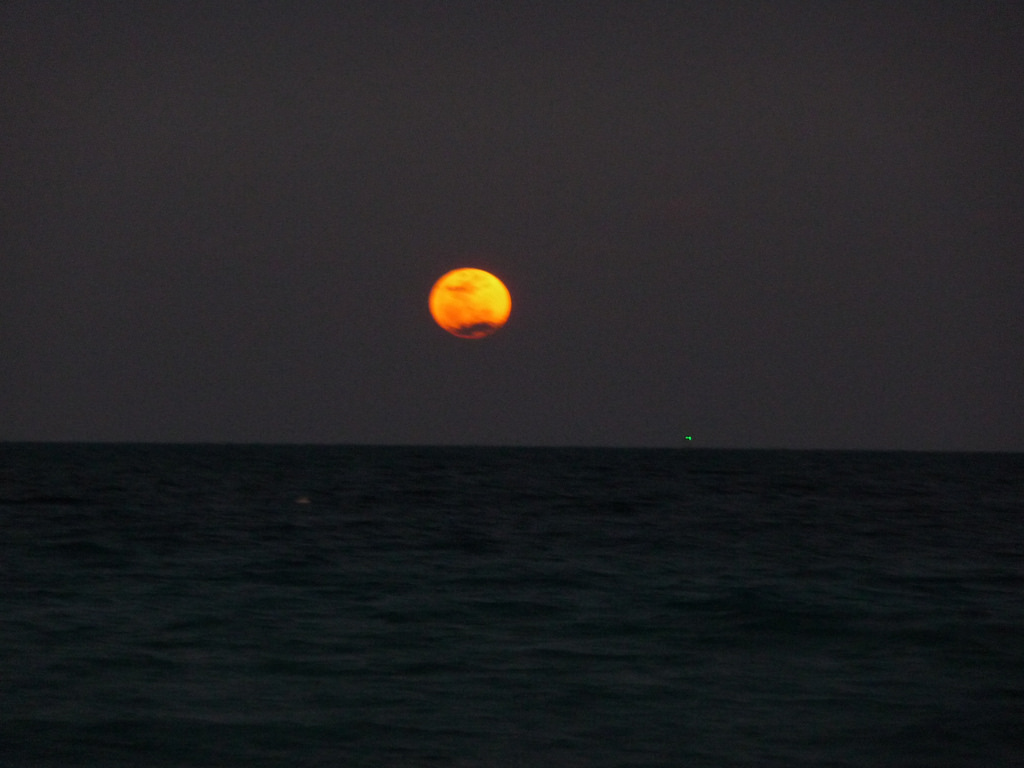Unless you've been living in an internet-proof bunker, you've most likely heard about the record-breaking supermoon that will grace our skies on the eve of November 14.
Not only will it be the closest full moon in the 21st century, we also won't see such an impressive supermoon again until 2034. So you definitely want to get outside to witness it for yourself.
In fact, Facebook events flagging unique places to watch the supermoon have been going viral, with more than 30,000 apparently planning to head down to a Sydney beach to watch the historic event.
But, from a scientific point of view, there actually are certain locations that will determine whether you see the supermoon in all its glory, or if you end up seeing sitting out in the cold staring at something that looks pretty much identical to a regular full moon.
That's because the supermoon actually isn't any bigger than a regular full moon - the Moon isn't growing in size. But because of its elliptical orbit, the Moon will be about 48,280 km (30,000 miles) closer to Earth than it usually is. This closest point of orbit is called the perigee.
As Bec Crew explained for us last week:
"When the Sun, the Moon, and Earth line up as the Moon orbits Earth, that's known as syzygy (definitely something you want to keep in your back pocket for your next Scrabble match).
When this Earth-Moon-Sun system occurs with the perigee side of the Moon facing us, and the Moon happens to be on the opposite side of Earth from the Sun, we get what's called a perigee-syzygy."
When this perigree-syzgy occurs, it makes the Moon appear much bigger and brighter in our sky than usual, which is what we refer to as a supermoon, or more officially, a perigree moon.
Supermoons aren't all that uncommon - there was one in October and there'll be another on in December before the year is out. But what makes the November 14 Moon so special is that it becomes full within about 2 hours of perigee.
So that means it's going to appear 14 percent bigger and 30 percent brighter than a standard full moon, and it will be the closest full moon we've had since January 1948. And we won't see something like it again until 25 November 2034, according to NASA.
So where should you set up in order to get the best and most Instagram-worthy view of the event? It all comes down to perspective.
If you're just staring at the Moon high overhead, without any landmarks or buildings to compare it to, chances are it's not going to look very different to a normal full moon.
But if you manage to witness the Moon when it's close to the horizon, or rising behind some buildings or mountains for perspective, you'll be lucky enough to see what's known as a 'moon illusion'.
"When the moon is near the horizon, it can look unnaturally large when viewed through trees, buildings, or other foreground objects," says NASA. "The effect is an optical illusion, but that fact doesn't take away from the experience."
Here are some of the best places to watch:
An east-facing beach
If you want an unobstructed view of the Moon as it pops up over the horizon, your best chance is to head to an east-facing beach.
You won't have the perspective of buildings or mountains to make the Moon appear ginormous, but you will have the added benefit of watching it as it progresses through the sky.
Somewhere with views of a city
You don't necessarily have to be in the bright lights of a major city, but seeing the Moon rise up over all those skyscrapers will make it appear huge in the night sky.
Near the mountains
Nothing puts the scale of the Moon into perspective like a huge mountain range.
A look at last weekend's setting #supermoon and the #Colorado Front Range. pic.twitter.com/951HQ70Tbd
— Tony's Takes (@TonysTakes) October 22, 2016
Close to an iconic structure
The Moon dwarfing a famous building, statue, or bridge? Priceless.
From tonight's #fullmoon in #Seattle : Super Moon? What #supermoon ...? pic.twitter.com/IgAGcomAst
— Tim Durkan Photography (@timdurkan) July 13, 2014
Somewhere dark
Wherever you go, make sure you try to avoid artificial light as much as possible (you can check out a map of light pollution here), and give your eyes at least 20 minutes to adjust to the dark.
For most impressive results, avoid taking photos with the bright lights of your phone until after you've had the chance to witness it with your own eyes.
When to watch
For the US and Europe, the Moon is expected to appear its largest when on the morning of November 14 at 8:52am EST (13:52 GMT), when it reaches its fullest stage.
And for those in Australia, you'll need to wait until November 15 to see it. The Moon will hit its full phase at 12:52am AEST.
Wherever you watch from, we hope the view reminds you that we're just one of many species on a small rock, all looking up at the same Moon. #perspective

